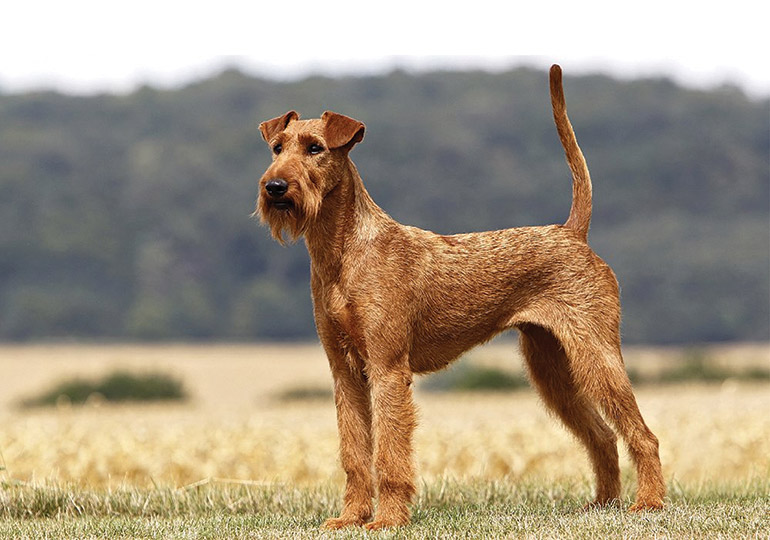Irish Terrier
Breed Details
Size:
Exercise Requirements:
Grooming Requirements:
11-12 Kg (Approx)
13-15 years

Appearance
An active, lively and wiry appearance; plenty of substance but free of clumsiness. Neither cloddy nor cobby but showing a graceful racy outline.
History
The breed's origin is not known. It is believed to have descended from the black and tan terrier-type dogs of Britain and Ireland, just like the Kerry Blue and Irish Soft-haired Wheaten Terriers in Ireland or the Welsh, Lakeland and Scottish Terriers in Great Britain.
M. Jowett writes in The Irish Terrier, 'Our Dogs' Publishing Co. Ltd., Manchester, England 1947 – 7th Edition: They are described by an old Irish writer as being the poor man's sentinel, the farmer's friend, and the gentleman's favourite. These dogs were originally bred not so much for their looks as for their working qualities and gameness, the Irish Terrier being by instinct a thorough vermin killer. They were formerly of all types and of all colours – black-and-tan, grey-and-brindle, wheaten of all shades, and red being the predominant colours. Colour or size evidently did not matter if they were hardy and game.
The proper selection process of the breed began only in the latter 19th century. They were shown now and then, sometimes in one class, sometimes in separate classes for dogs under and over 9 pounds.
Temperament
Irish Terriers are active dogs and need and enjoy consistent mental and physical challenges; well-trained Irish Terriers may do well at a variety of dog sports, such as dog agility. The Irish Terrier is full of life, but not hyperactive; it should be able to relax inside the house and be roused to full activity level quickly.
Irish Terriers are good with people. They have a highly developed sense of loyalty and it is important that they have a strong responsible leader, for whom they have natural respect. Most Irish Terriers love children and tolerate rough-housing to a certain extent. Irish Terriers need exercise; do not get one if you are not prepared to walk it. They enjoy training, new tasks are easily mastered with food and toys working equally well as motivation. Irish Terriers have less of an eagerness to please people than some other breeds but have mental ability and enjoy puzzle solving. They respond best to consistent, reward based training from a relaxed, authoritative person.
Irish Terriers are often dominant with other dogs. As with any dog, poorly socialised individuals can start fights and early socialisation is a necessity. Most have strong guarding instincts and when these instincts are controlled, make excellent alarming watchdogs.
Care/Grooming
When groomed properly, the Irish Terrier coat will protect the dog from rain and cold. A properly cared-for Irish Terrier does not shed either. The wiry coat is fairly easy to groom, pet dogs (rather than show dogs) needing stripping only once or twice a year.

